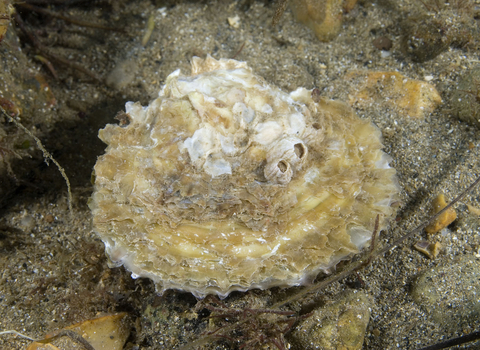
Oyster ©Paul Naylor
Oyster
Native Oysters are a staple of our seas and our plates - but our love of their taste has lead to a sharp decline all around the UK.
Scientific name
Ostrea edulisWhen to see
January to DecemberSpecies information
Statistics
Length: up to 11cm Average Lifespan: 6 yearsClassified as a Priority Species under the UK Post-2010 Biodiversity Framework and a Feature of Conservation Importance for which Marine Conservation Zones can be designated.
